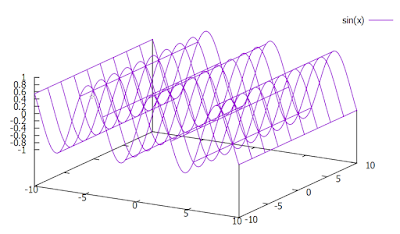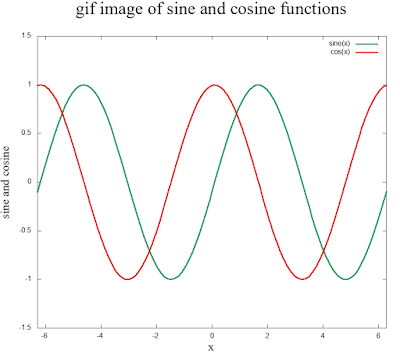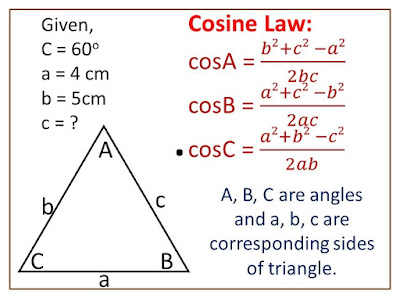continuity of function | meaning and concepts of continuity of function(+2 level) | what is continuous function
In simple words, Continuity of a function f(x) means whether f(x) increases or decreases smoothly(without any breaks) with it's variable x. We visualize the continuity of any function by plotting the curve.
A function f(x) is said to have continuity on interval `x \in [a, b]` if the graph of f(x) in this interval is a smooth or continuous curve without any break in it.
The continuous curve of function f(x) should be such that it can be drawn by the continuous motion of pencil without stopping and lifting it in a sheet the paper.
Let's see some pictures of continuity and discontinuity of a function f(x).
In above figures (1) and (2), curves of f(x) are increasing smoothly without any breaking or disturbance in interval `x \in [a, b]`, so these are continuous graphs and f(x) in these cases is said to have continuity in the interval `x \in [a, b]`.
However in figures (3) and (4), graphs don't seem to be continuous and they have breakings for the interval `x \in [a, b]`. In fig. (3), f(x) seems to be increasing but f(x) does not exist at `x =x_o`. This is a kind of discontinuity of function f(x) at `x = x_o`. Also in fig. (4), f(x) is increasing at the beginning and then decreasing. However, f(x) does not exist in between these increasing and decreasing parts of f(x). So, f(x) has discontinuity at `x = x_o`.
Mathematically,
A function f(x) is said to have continuity at the point `x = x_o` if and only if, the following condition is satisfied.
`\lim_(x->x_o) f(x) = f(x_o) ..........(1)`
This expression for continuity of function f(x) at `x = x_o` implies that,
(i) left hand limit (`\lim_(x->x_0^-) f(x)`) and right hand limit (`\lim_(x->x_o^+) f(x)`) are finite and equal, so `\lim_(x->x_o) f(x)` exists.
(ii) `f(x_o)` exists which means that `\lim_(x->x_o) f(x) = f(x_o)`.
This can be summarized as the function f(x) at point `x = x_o` is said to have continuity if
`\lim_(x->x_o^-) f(x) = \lim_(x->x_o^+) f(x) = f(x_o) ........(2)`
In case of any of above conditions is not satisfied, then the function f(x) is said to have discontinuity at that point.
Here are some conditions that imply that f(x) is discontinuous,
(i) If `\lim_(x->x_o) f(x)` does not exist, that is, `\lim_(x->x_o^-) f(x) \ne \lim_(x->x_o^+)f(x)` then f(x) is said to be discontinuous at `x = x_o`. This is called ordinary type of discontinuity or jump of f(x).
(ii) If `\lim_(x->x_o) f(x) \ne f(x_o)` then f(x) at `x= x_o` is discontinuous. This type of discontinuity is called removable discontinuity. Such discontinuity can be remved by redefinig the function.
(iii) If `\lim_(x->x_o) f(x) \rightarrow \infty` or `-\infty`, then f(x) is said to have infinite discontinuity at point `x = x_o`. //
Continuity of function in closed and open intervals:
A function f(x) is said to be continuous in an open interval (a, b) if it is continuous at every point in (a, b).
A function f(x) is said to be continuous at in a closed interval [a, b] if it is continuous at every point in open interval (a, b) and f(x) is continuous at point a from right and continuous at b from left. That is,
`lim_(x->a^+) f(x) = f(a)` and `\lim_(x->b^-) f(x) = f(b)`.
Some solved problems on limit and continuity:
1. Discuss the continuity of a given function at the point specified,
Solution:-
Left-hand limit of f(x) is calculated for value `x \lt 1` when x = 1. That is,
LHL = `\lim_(x->1^-) f(x) = 2x +1 = 2 \times 1 + 1 = 3`
Right hand limit of f(x) is calculated for value `x \gt 1` when x =1,
RHL = `\lim_(x->1^+) f(x) = 3x = 3 \times 1 = 3`
Thus, `\lim_(x->1^-) f(x) = \lim_(x->1^+)f(x) = 3`. This means that `\lim_(x->1)f(x)` exists.
`\therefore` `\lim_(x->1) f(x) = 1 ......(i)`.
But at x = 1, the functional value is given as
f(x =1) = 2 .........(ii).
`\therefore` `\lim_(x->1) f(x) \ne f(x=1)`
Therefore, the given function f(x) is discontinuous at given point x =1. //
2. Check whether the following function is continuous or not at x = 5.
Is the function f(x) continuous at x = 2? If not, how can the function f(x) be made continous at x = 2?
Solution:-
Left hand limit of f(x) is for `\x lt 2` at x = 2,
LHL = `\lim_(x->2^-)f(x) = 2x -3 = 2 \times 2 -3 = 1`
Right hand limit of f(x) is for `x \gt 2` at x =2,
RHL = `\lim_(x->2^+)f(x) = 3x - 5 = 3 \times 2 - 5 = 1`
Since `\lim_(x->2^-) f(x) = \lim_(x->2^+) f(x) = 1`, `\lim_(x->2)f(x)` exists.
Also, the functional value of f(x) at x = 2 is,
f(x = 2) = 2
`\therefore` `\lim_(x->2)f(x) \ne f(x=2)`
This shows that f(x) is not continuous at x = 2. However, this type of discontinuity is removable.
To make f(x) continuous at x = 2:
We see that `\lim_(x->2)f(x)` exists at x = 2. To make f(x) continuous at x = 2, we need to do some modification on value of f(x=2). So, if f(x = 2) = 1, then f(x) will continuous at x = 2. Thus after making f(x) continuous at x = 2, we have f(x) as follows:
which is continuous at x = 2. //
4. A function f(x) is defined as below
Find the value of k so that f(x) is continuous at x=2.
Solution:-
Left hand limit of f(x) is for `x \lt 2` at x = 2,
LHL = `\lim_(x->2^-)f(x) = 3x - 1 = 3\times 2 - 1 = 5`
Right hand limit of f(x) is for `x \gt 2` at x = 2,
RHL = `\lim_(x->2^+)f(x) = kx + 3 = 2k + 3 `
Also, functional value of f(x)at x = 2 is,
f(x = 2) = kx + 3 = 2k +3
For f(x) to be continuous at x = 2, we must have,
`f(x=2) = \lim_(x->x^-)f(x) = \lim_(x->2^+)f(x) `
or, 2k + 3 = 5 = 2k + 3
Taking first and second values,
2k + 3 = 5
`\therefore` k = 1.
Using the value of k , continuous function f(x) becomes,
This is the required continuous function. //
For concepts of limit of function f(x), click here.















Comments
Post a Comment